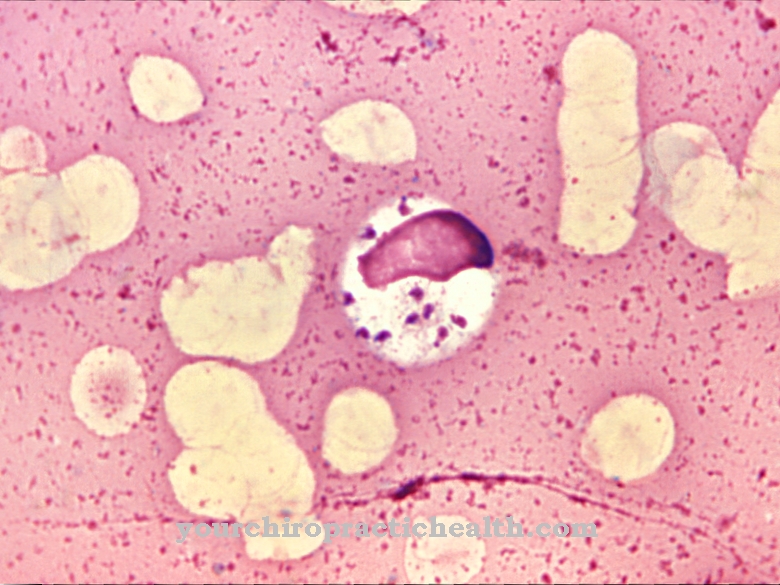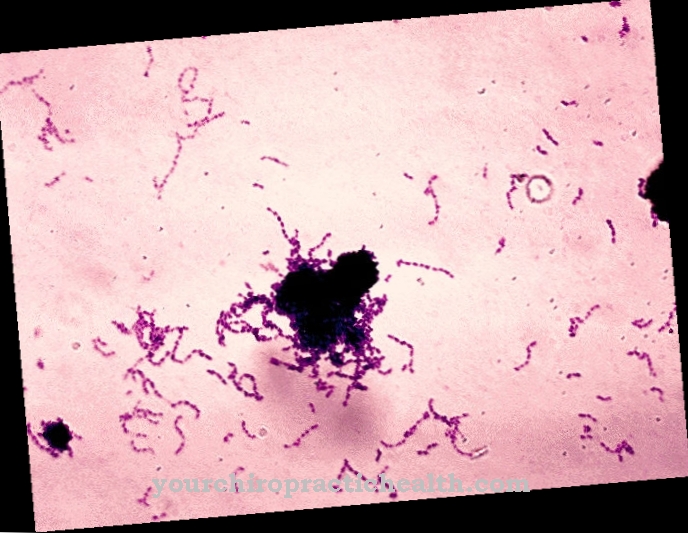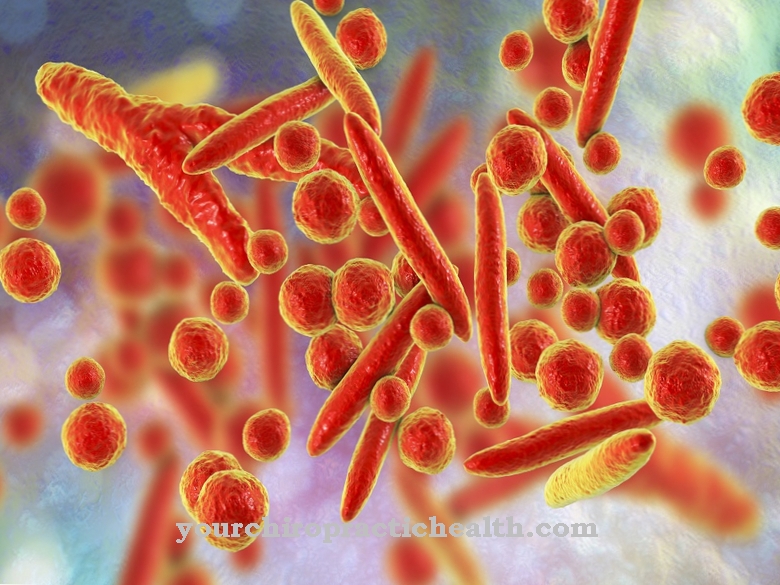As Proteus mirabilis a type of bacteria of the order Enterobacteriales and the family Proteobacteria is known, which lives facultatively anaerobically and occurs in the human intestine as a protein decomposer. As a pathogen, bacteria of this species can mainly attack patients with a weakened immune system. They are then often involved in chronic urinary tract infections with the subsequent formation of kidney stones.
What is Proteus Mirabilis?
Enterobacteria are also called Enterobacteriaceae and so far form the only family of the Enterobacteriales order. Proteobacteria form their own family in this bacterial order. Within this family, the genus Proteus corresponds to a gram-negative bacterial genus that, based on the changeable sea god Proteus, is extremely changeable, especially externally.
One species in this family is the Proteus mirabilis bacteria. The individual strains of this species belong to the rod bacteria and are strongly flagellated peritrich. One of their characteristics is their good mobility. They do not form spores.
The species Proteus mirabilis was discovered in 1885. The Erlangen pathologist Gustav Hauser is considered the first to describe it. The bacterium is itself a beneficial bacterium, but at the same time it appears as a nosocomial pathogen and can thus cause pathological infections that are classified as hospital infections.
The bacterium is particularly useful within the intestinal flora, where it appears as a decomposer. As a pathogen, it can colonize the urinary tract. Evidence as a pathogen is rather rare for this bacterium.
Occurrence, Distribution & Properties
Bacteria of the species Proteus mirabilis do not form circumscribed colonies in gel media, but, unlike other bacteria, spread over an area. This phenomenon is also known as the swarm phenomenon. The individual swarms often form a clear demarcation from other colonies.
Proteus mirabilis are facultatively anaerobic. This allows them to grow in both oxygen-rich and oxygen-poor environments. Your metabolism does not depend on oxygen, but neither does it depend on the absence of O2. The bacteria produce the enzyme urease so that they can break down urea. During the cleavage, ammonia is formed as a by-product, so that the pH of the nutrient medium increases and the growth conditions are improved.
Apart from that, bacteria of the species Proteus mirabilis have phenylalanine deaminase. The bacteria cannot metabolize lactose. They do not produce indole, which distinguishes them from Proteus vulgaris.
The species spreads rapidly, with the temperature optimum being 34 to 37 degrees Celsius. Because of these temperature requirements, humans are an ideal nutrient medium for this type of bacteria. The representatives of the species occur preferentially as harmless saprobionts in the human intestine and usually do not become a pathogen for healthy people. As a pathogen, the bacteria are rarely transmitted from person to person, but rather come from the body's own bacterial community in the intestine.
Meaning & function
Saprobionts such as bacteria of the species Proteus mirabilis decompose organic substances. In this way, they ensure closed material cycles within an ecosystem and break down the organic material that occurs in order to use the molecules that arise for personal energy and building metabolism. The representatives of the Proteus mirabilis practice saprophilia in the narrower sense. They are therefore involved in putrefaction processes in the human intestine and, under anaerobic conditions, contribute to the decomposition of organic material, above all to the decomposition of proteins.
The breakdown of proteins is part of putrefaction. Protein-decomposing enzymes are also known as proteolytic enzymes and break down proteins (proteins) into small organic molecules. In the intestine, the bacteria Proteus mirabilis appear as such protein decomposers and, so to speak, correspond to a putrefactive bacterium that breaks down protein molecules into smaller molecules, which it supplies to its own metabolism via the cell wall and membrane.
Putrefaction processes in the intestine correspond to oxidative cleavage of organic substances, especially proteins. The decomposition of proteins is accompanied by the formation of substances such as cadaverine, neurine and methane. Since the bacteria do not cause any damage in the human intestine and, for example, operate their metabolism there not at the expense of humans but with profit for humans, they are tolerated by the immune system as natural intestinal inhabitants. Humans even benefit from the bacteria because they create a closed material cycle.
Illnesses & ailments
Bacteria of the species Proteus mirabilis can acquire pathological significance in clinical practice and occur as pathogens. Proteus mirabilis is most important in relation to urinary tract infections. Up to ten percent of all urinary tract infections can be traced back to this pathogen. The type of bacteria is significantly less involved in the inflammation of other organs.
Bacteria of the species Proteus mirabilis are classified as facultative pathogens that do not necessarily cause disease, but are potentially capable of doing so. As a rule, only people with a weakened immune system become infected with the bacterium. The bacterium only causes wound infection or pneumonia and sepsis (blood poisoning) in absolutely exceptional cases, even in weak people.
If there is a chronic urinary tract infection from Proteus mirabilis, the urine pH may increase due to bacterial metabolism. In extremely rare cases, gastroenteritis occurs in immunodeficient patients due to the ingestion of large amounts of germs through food. In this case, urinary stones are a common secondary disease.
Indole-positive strains of Proteus mirabilis are rare, but have developed multi-resistance. Treatment takes place after a resistance test and can take place with antibiotics such as co-trimoxazole, cephalosporin or fluoroquinolone. The bacteria are naturally resistant to tetracyclines, colistin, tigecycline and nitrofurantoin.

























.jpg)


